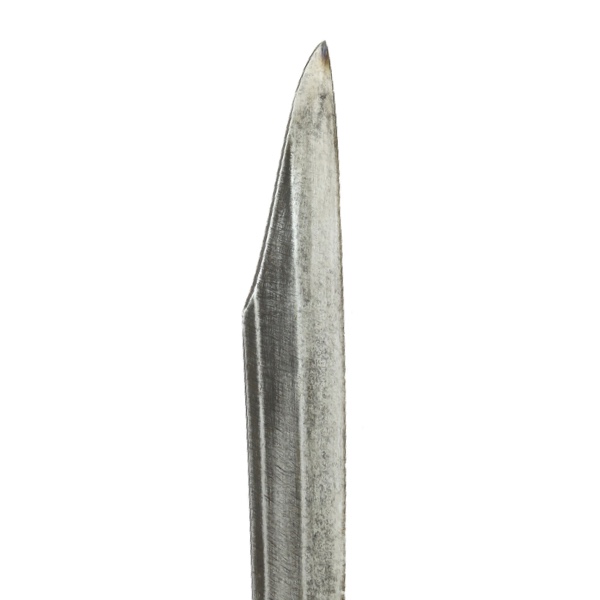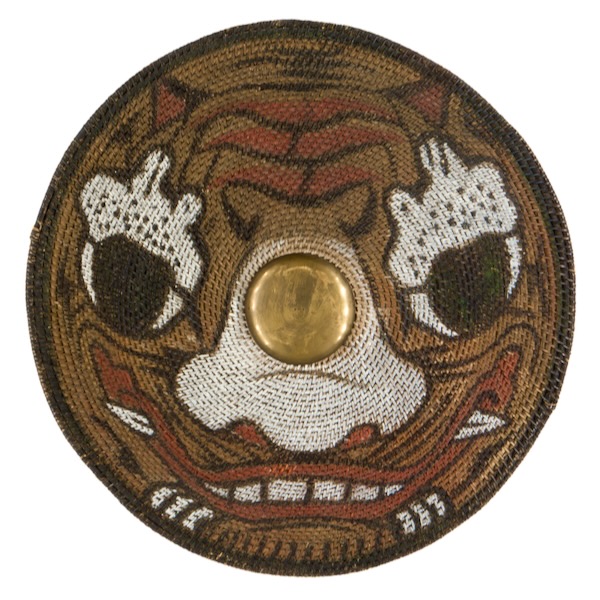
Qing military rattan shield production
Translation of a page from Qing regulations that describes the production of the Qing military rattan shield.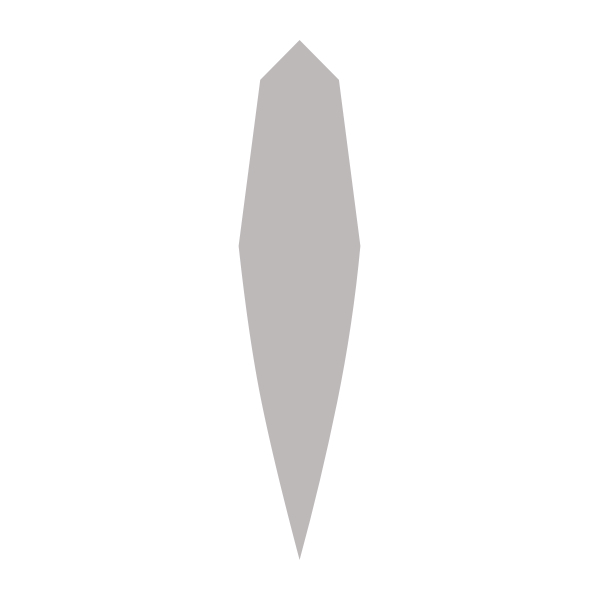
Maru-gitae (丸鍛え)
Japanese word for a basic blade construction consisting of one type of steel.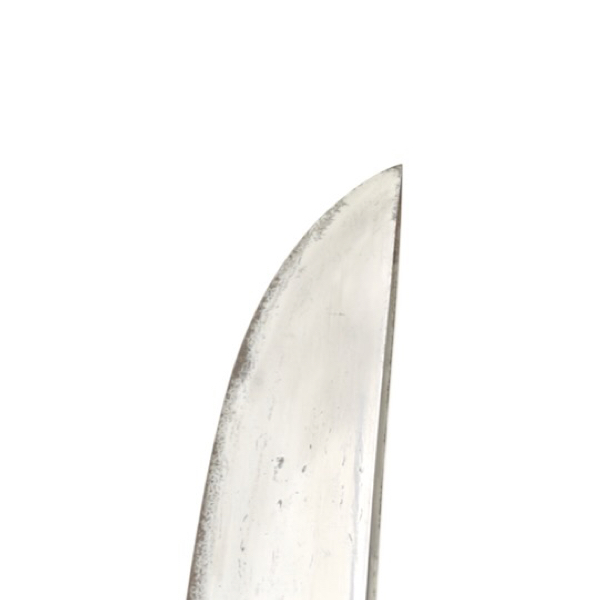
Kanetuhu / Etuhu
Ainu words for the point of a knife or sword.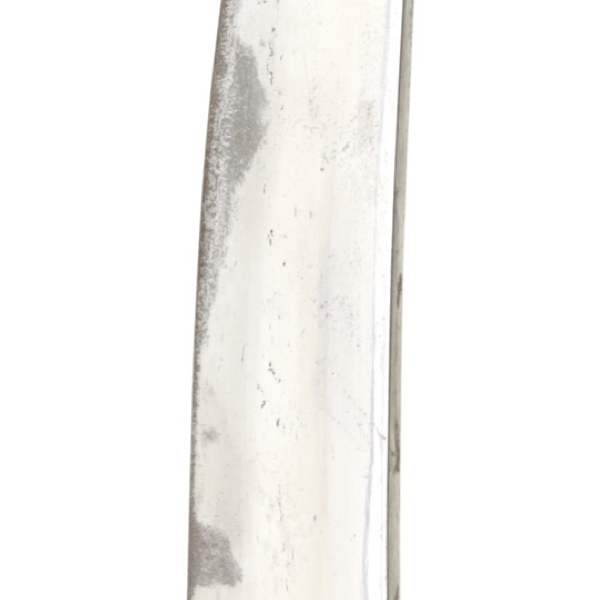
Notak
Ainu word for the edge of a sharp tool like a knife.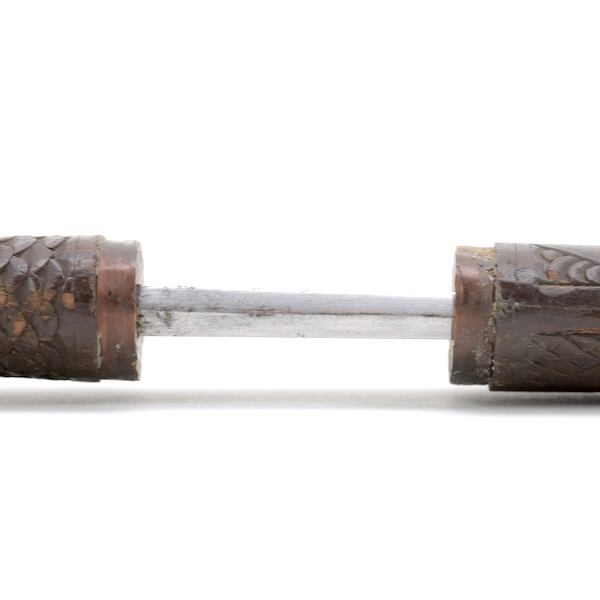
Mekkashike
Ainu word for the back of a knife, or sword. Also the ridge of a mountain or house.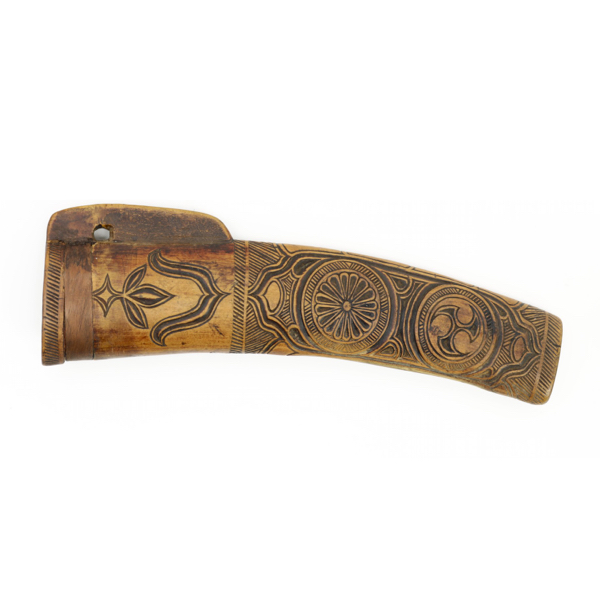
Makiri-saya
Ainu word for the scabbard of a utility knife called makiri.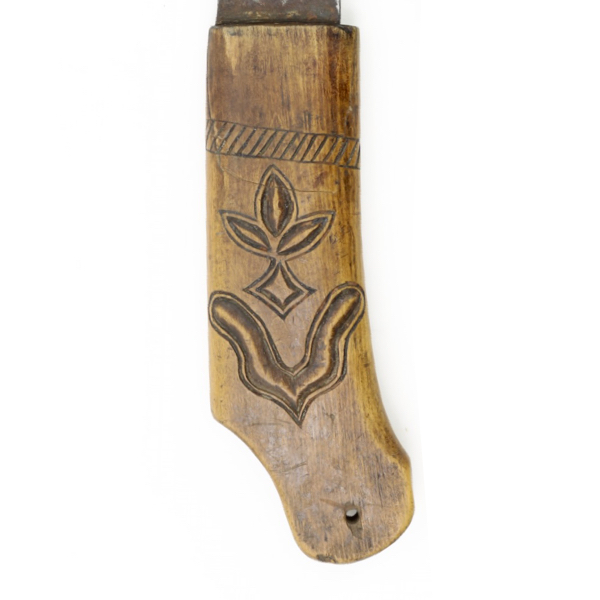
Makiri-nip
Ainu word for a knife handle.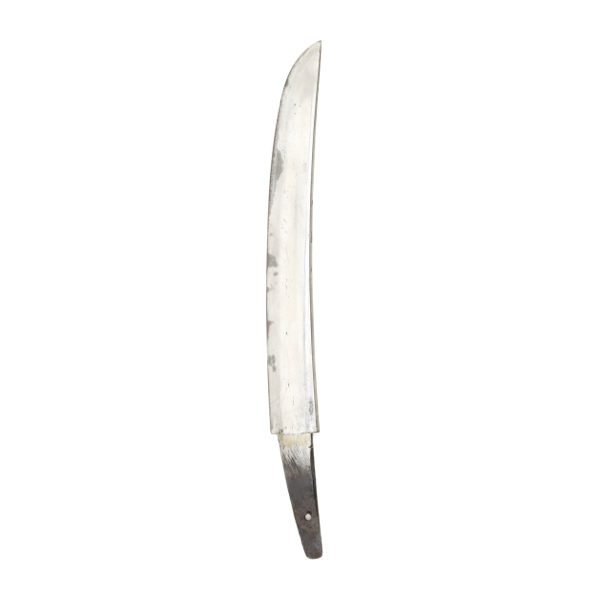
Ibehe
Ibehe is an Ainu word for a knife or sword blade.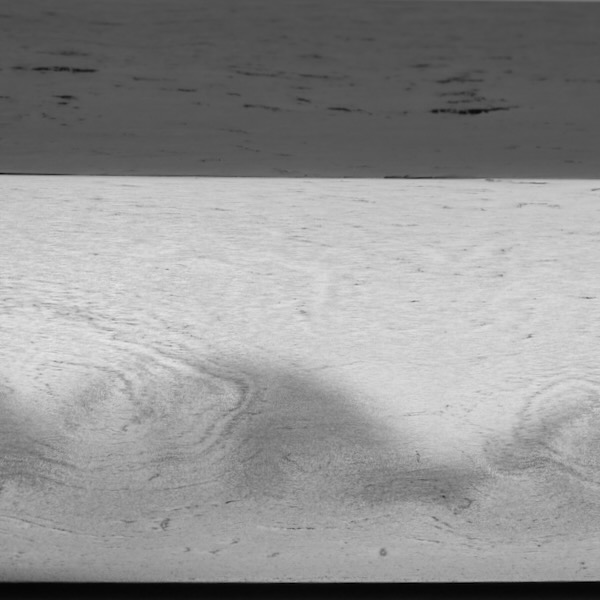
Nioi (匂)
Japanese word for fine martensite crystals in the blade's temperline.
Nie (沸)
Japanese word for martensite crystals that form in blade under certain conditions.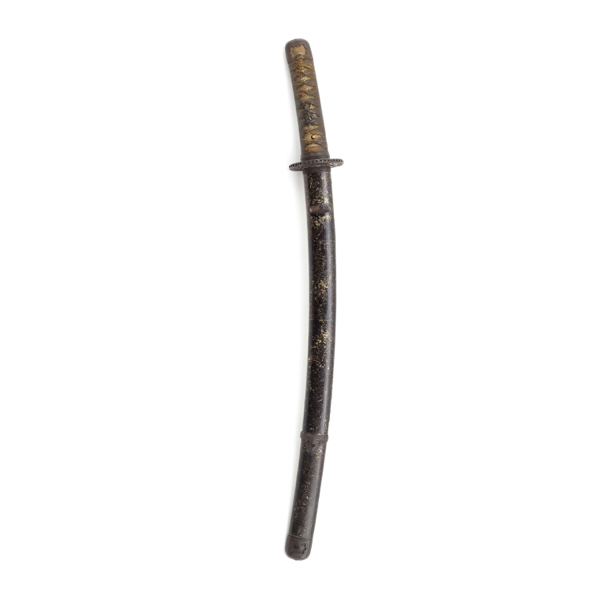
Koshirae (拵)
Japanese term for the mountings of an edged weapon.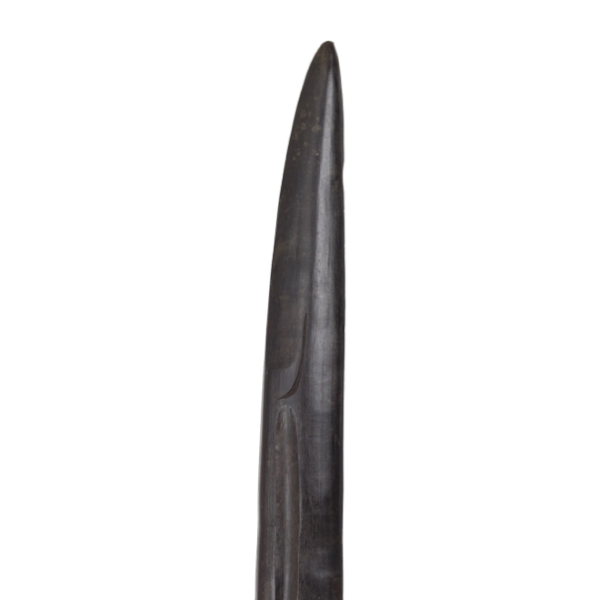
Southeast Asian sword club
This enigmatic hardwood club is modeled after a sword.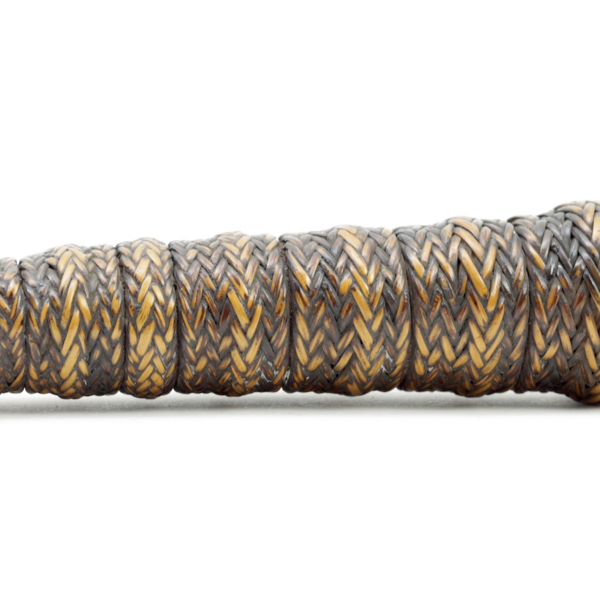
Allūbung
Ifugao word for a woven rattan covering on handles and shafts.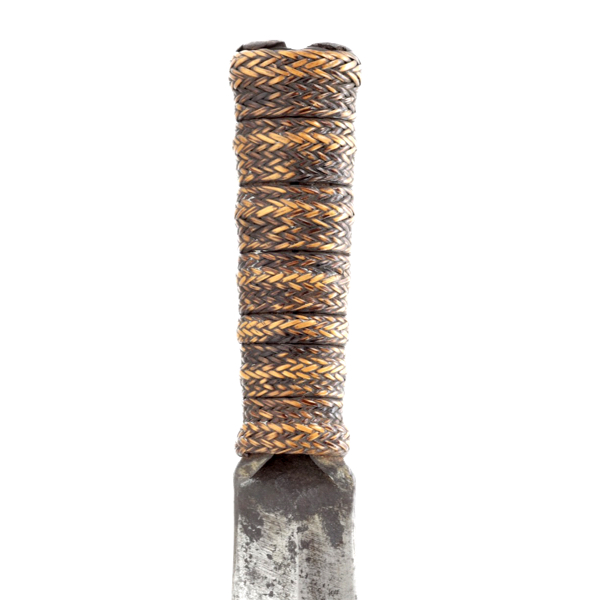
Hālung
Ifugao word for a rolled up tang hilt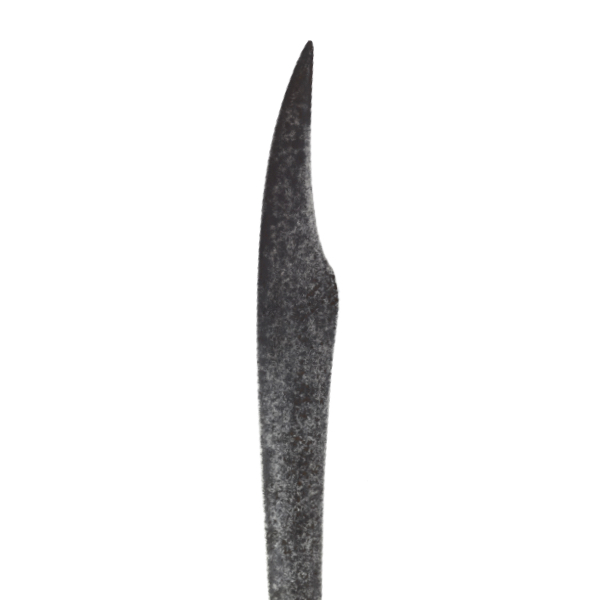
Gari matuwà
South Nias word for a specific type of sword.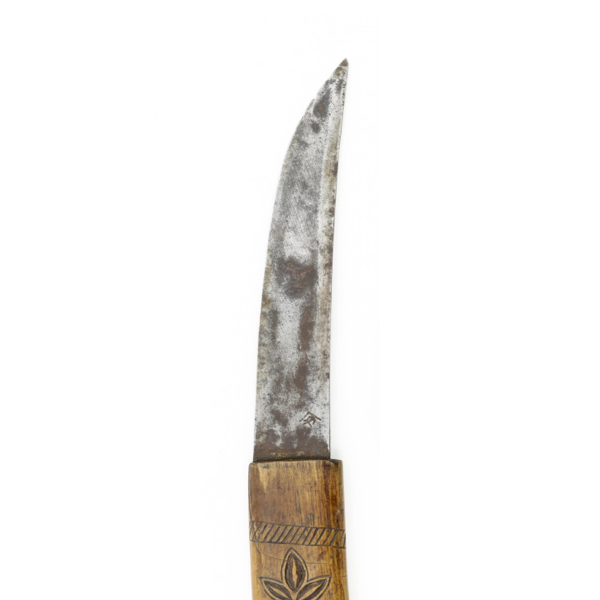
Makiri-ibe
Ainu word for knife blade.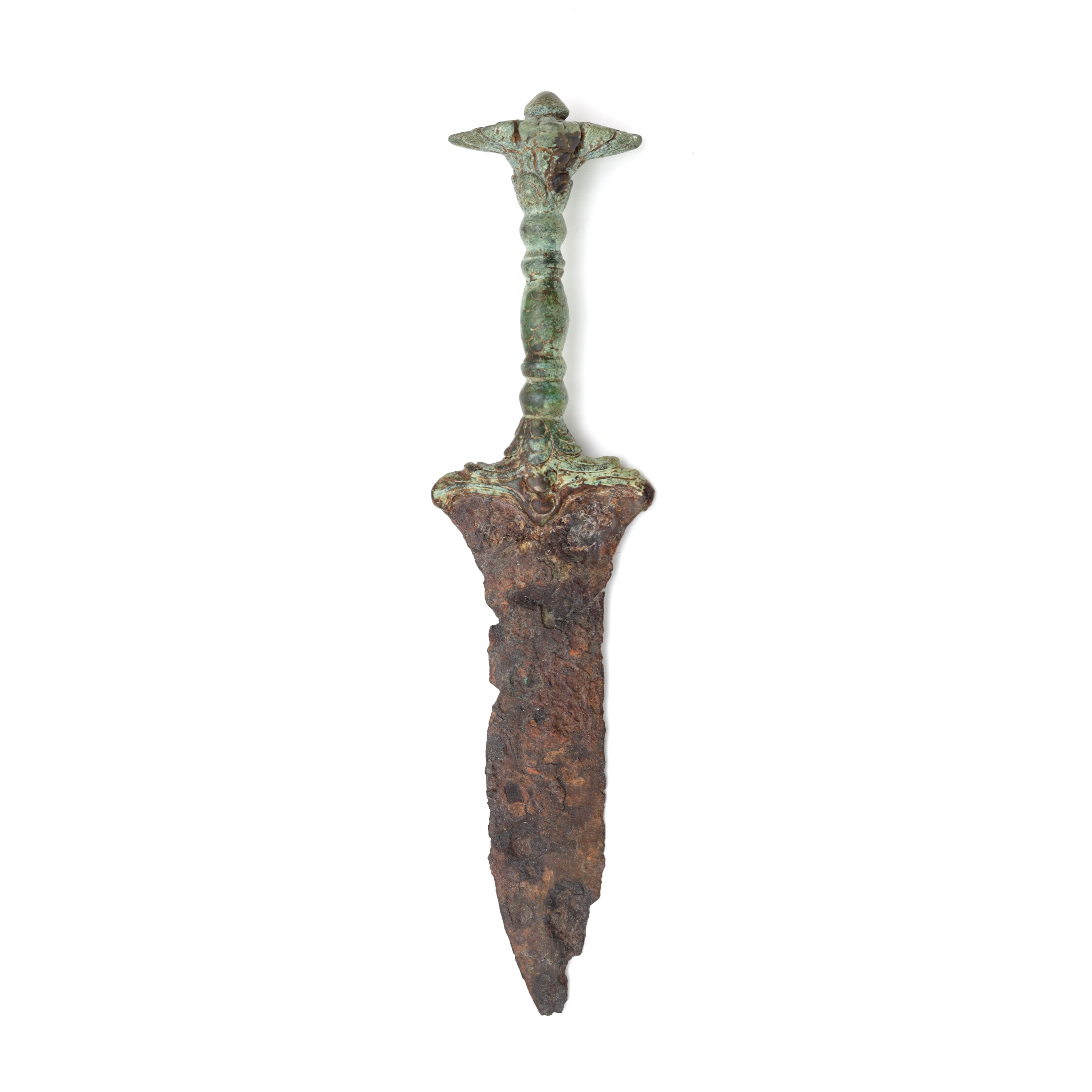
Khmer dagger
A rare thousand-year-old dagger from the Khmer empire.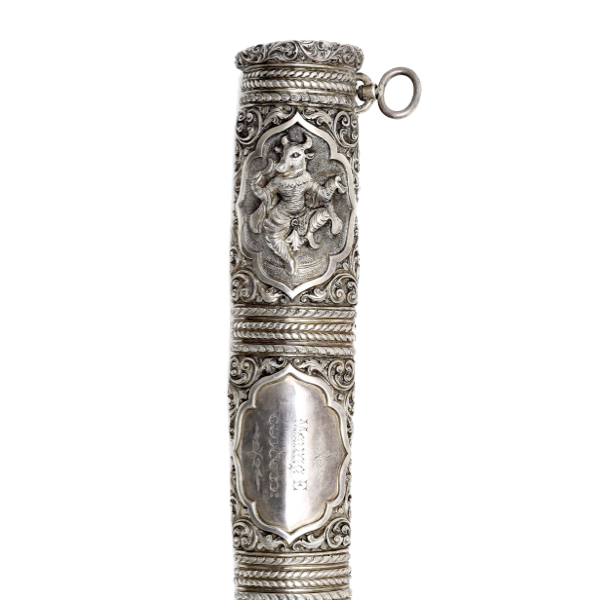
Fine Burmese silver sword scabbard
It represents the best of Burmese silversmithing with repousse work in high relief.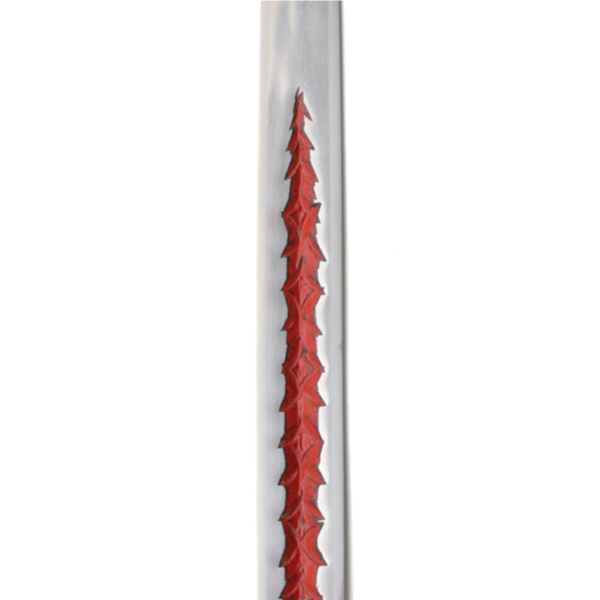
Kusabi-hi (楔樋)
Japanese term for an irregular hamon sometimes found on spearheads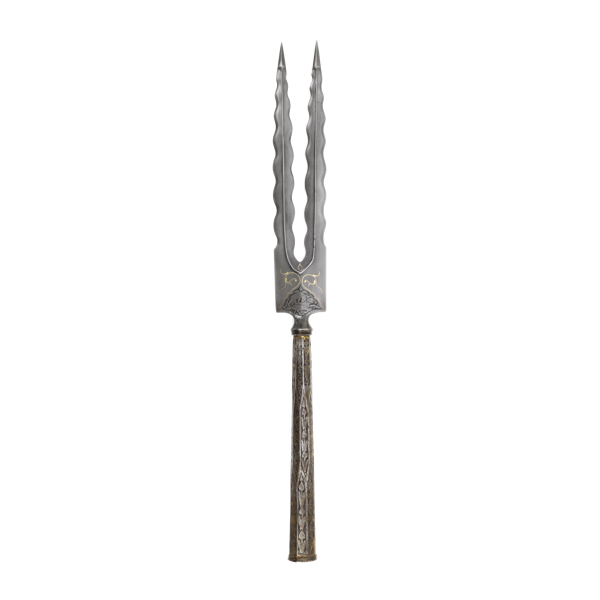
Persian wootz double spearhead
Finely crafted wootz blade, and golden inlays at the base.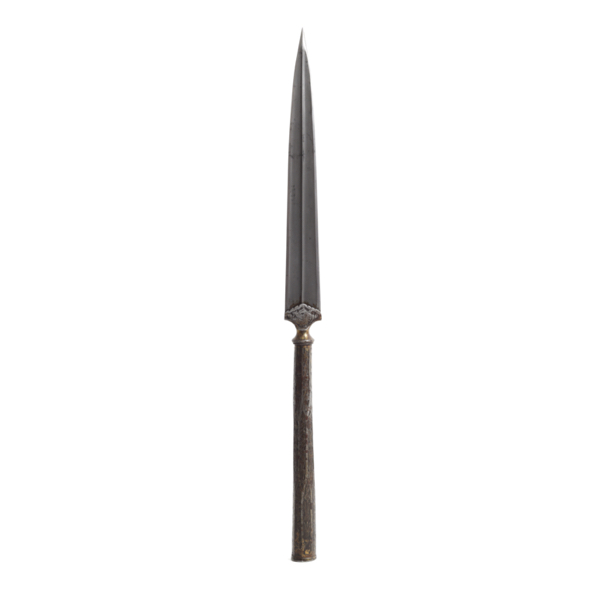
Persian wootz spearhead
Made using Persian wootz. Pronounced features, chiseled socket.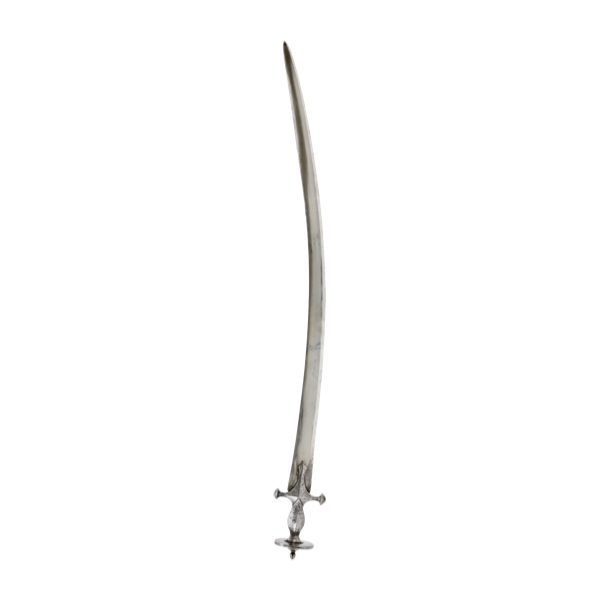
Sirōhī (सिरोही)
A town in Rajasthan known for its blade making industry, as well as a type of sword.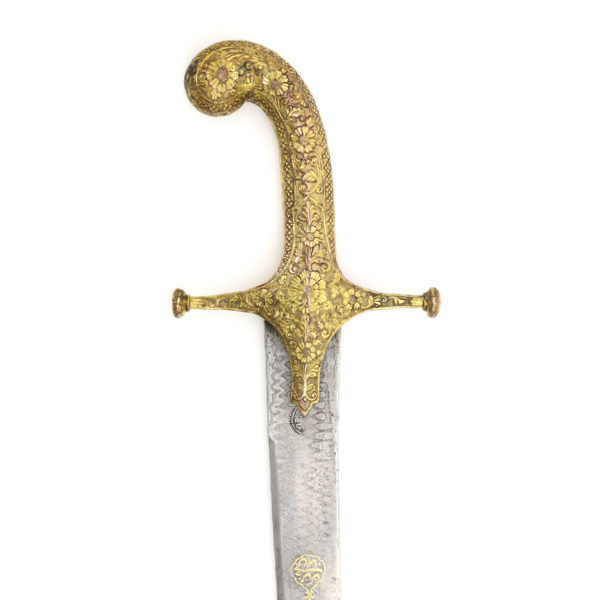
Kutch shamshir for Benson
Blade of Persian shamshir form, but of Indian make. Mounts in Kutch style gilt copper.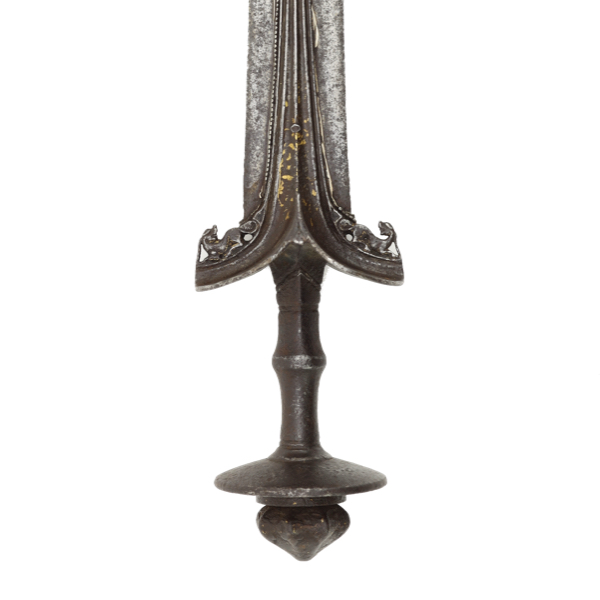
South Indian pattisa
An early example, late Vijayanagara empire, with a fine wootz spatulate blade.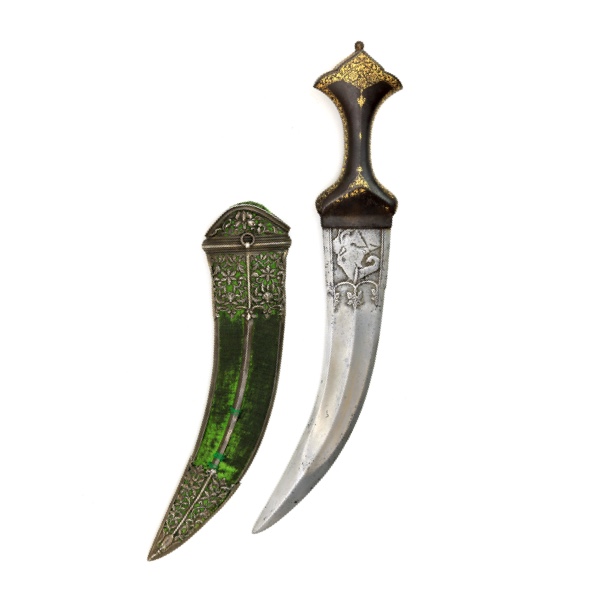
A fine north Indian dagger
Of jambiya form, with pattern welded blade and fine silver scabbard mounts.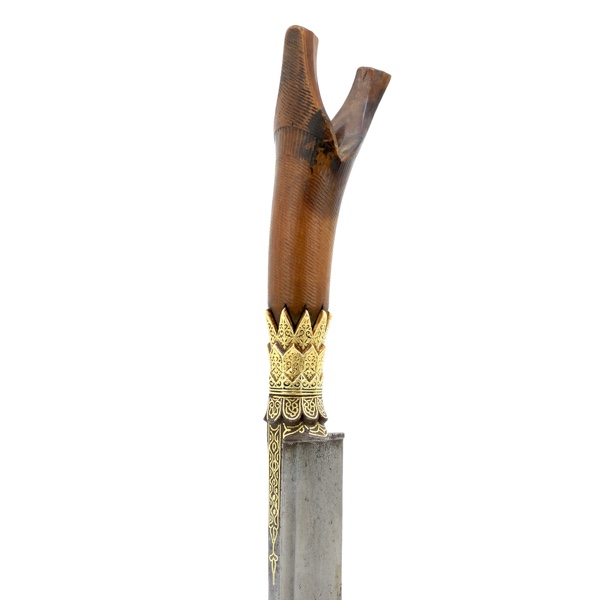
Very good sikin panjang
Its blade with very fine and complex pamor, brought out by a polish.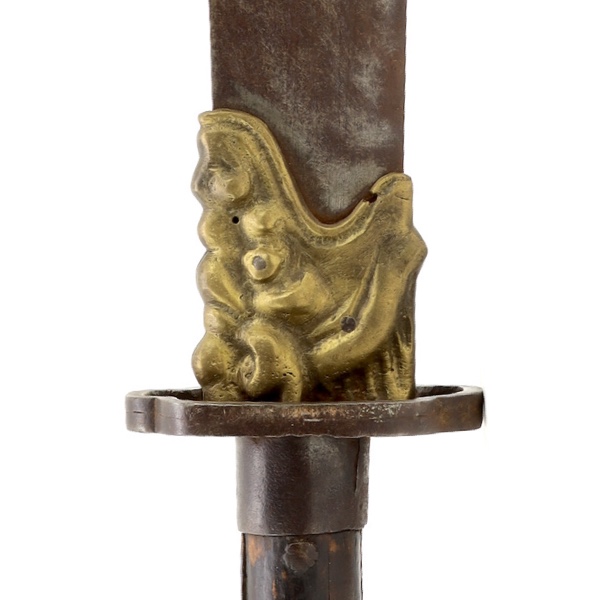
Tūnkǒu (吞口)
Literally "swallowing mouth", a collar piece often found on Chinese blades.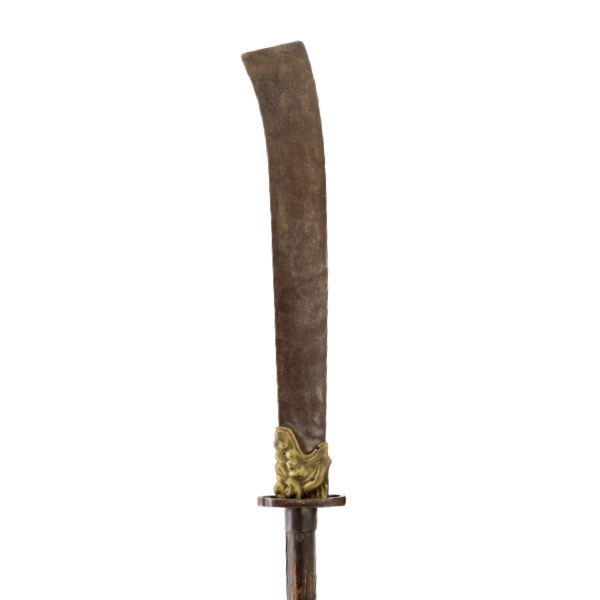
Pōdāo with dragon tūnkǒu
With a large iron guard and hard wooden shaft.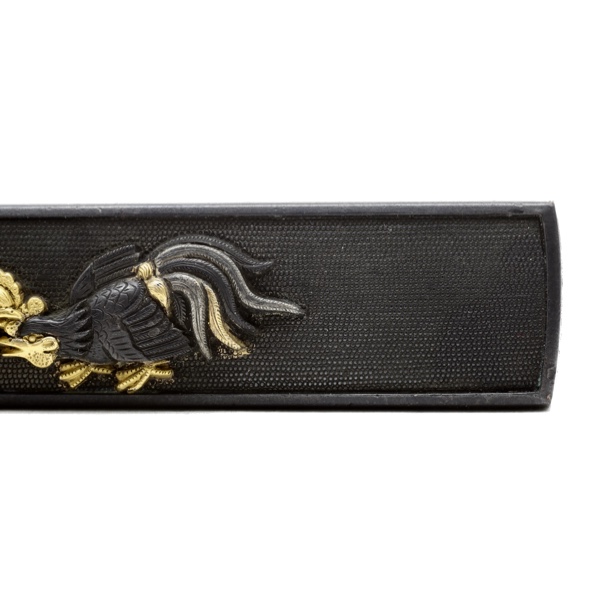
Shakudō (赤銅)
A Japanese alloy containing copper and gold.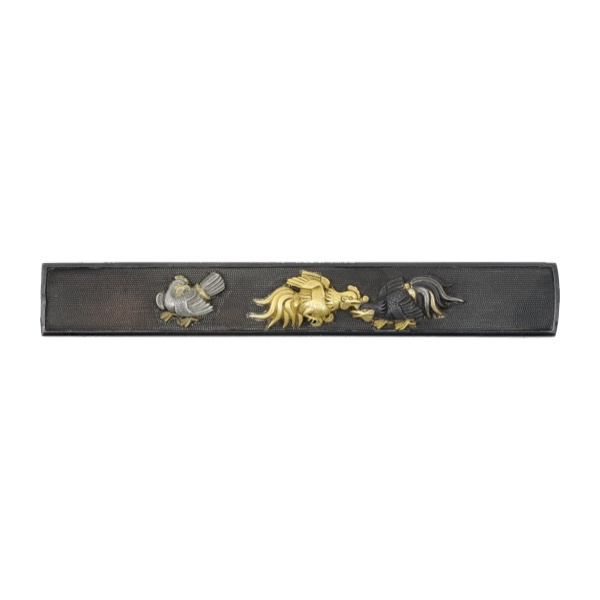
Rooster fight kozuka
Executed in gold and silver on a shakudō nanako base, with golden back.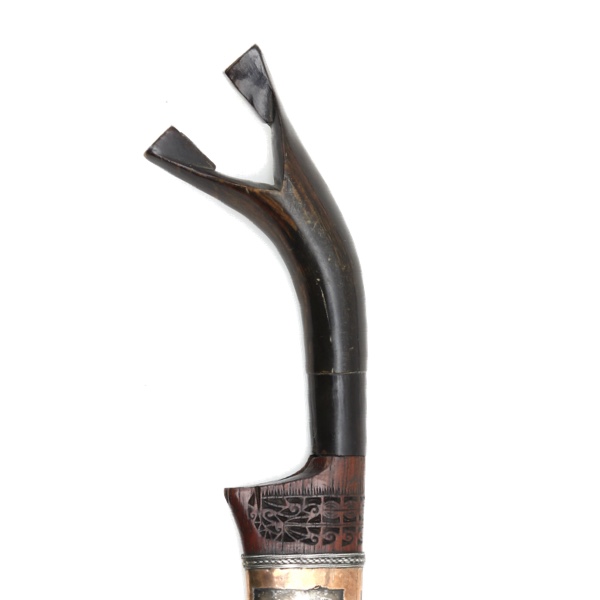
Sukul nganga
A type of Batak sword hilt.Glupa / Gloepa
Acehnese word for a golden crown at the base of swords and daggers.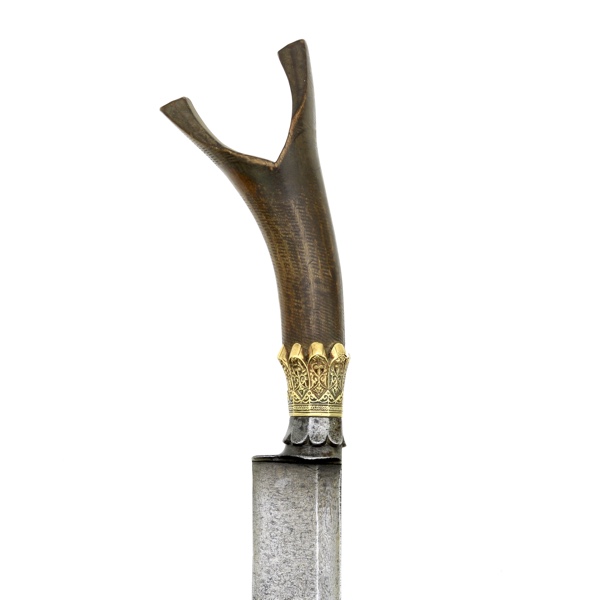
Sikin panjang with golden crown
In original condition and period finish. Some losses, no repairs.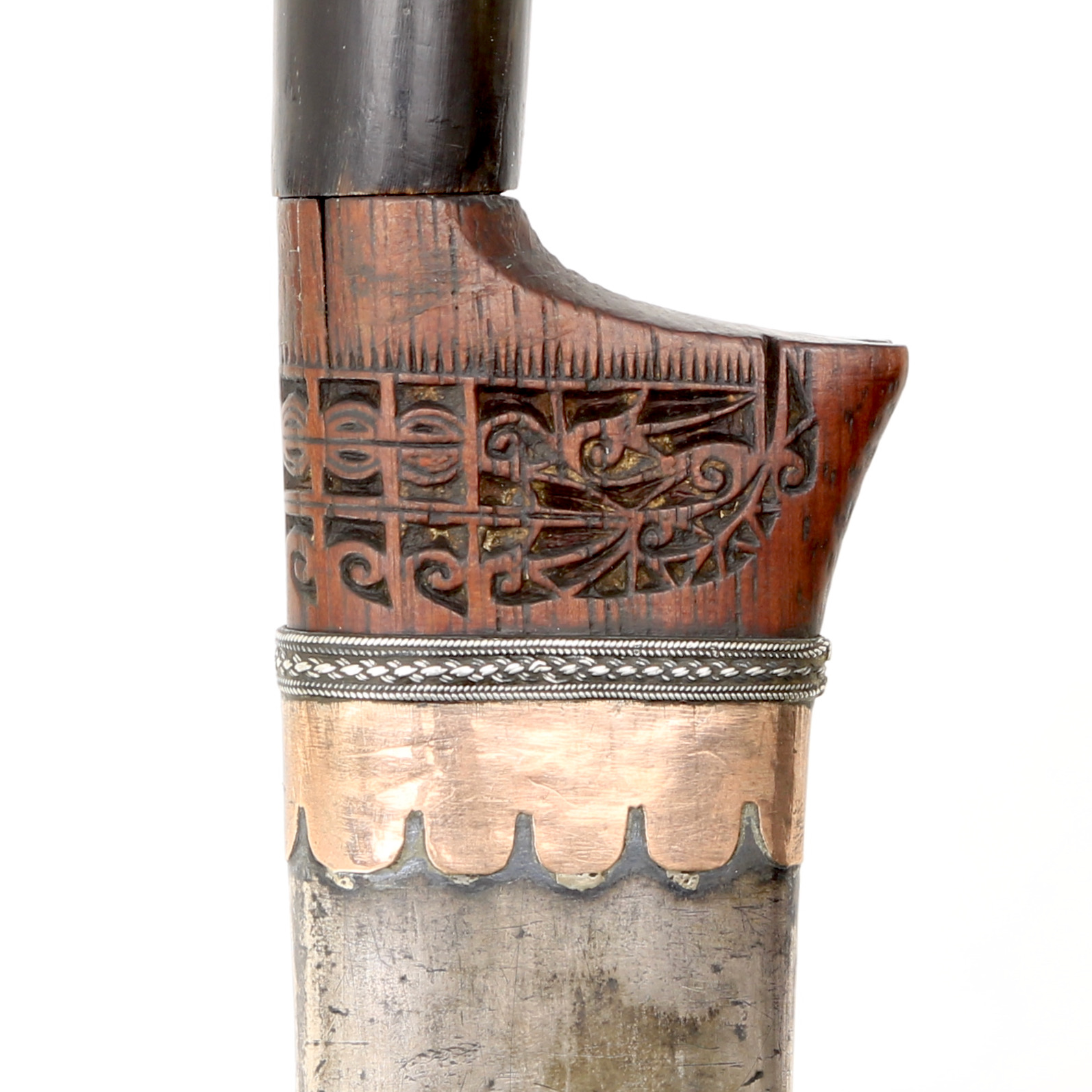
Suassa
A copper-alloy with high gold content that was highly prized in Southeast Asia.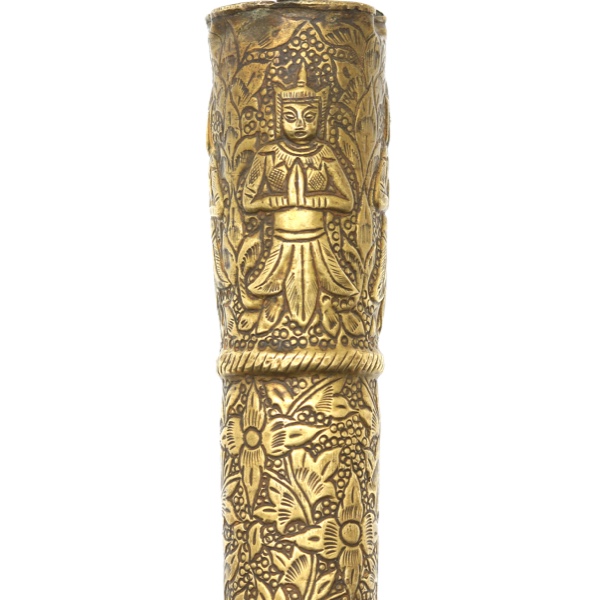
Samrit (សំរិត)
Khmer word for an auspicious copper alloy.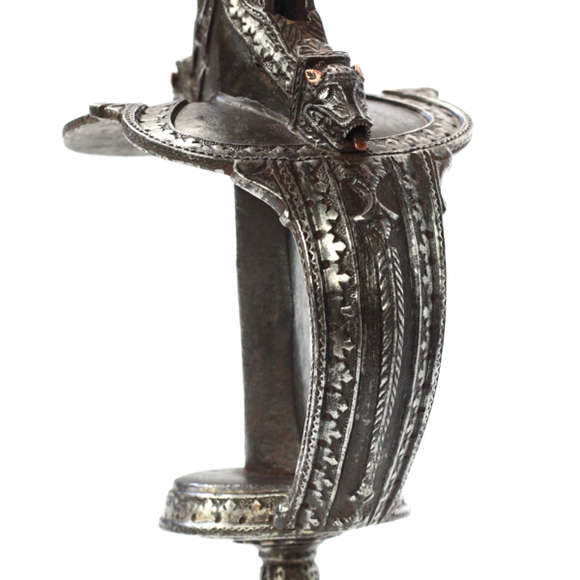
Hindu basket hilt
A type of Indian closed hilt design.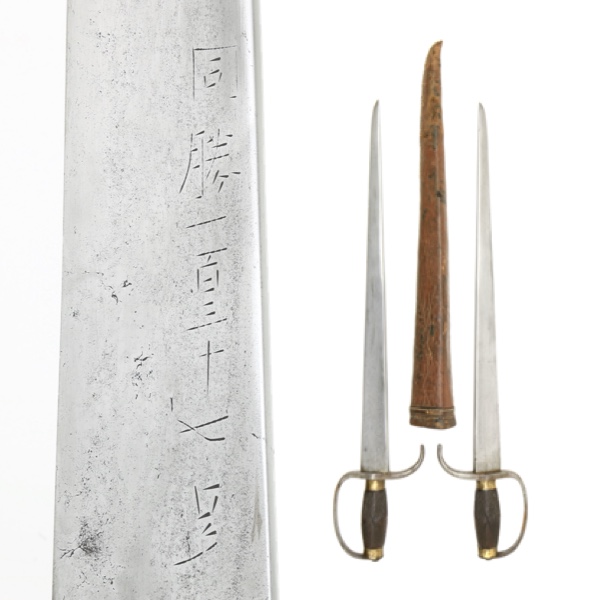
Signed húdiédāo set
Of military style with long, narrow blades and ribbed hardwood grips.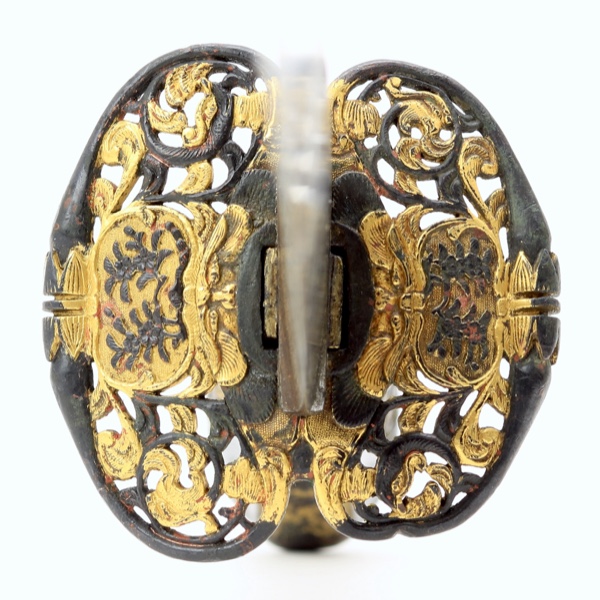
Sawasa
A term used for colonial Asian metalwork in black and gold.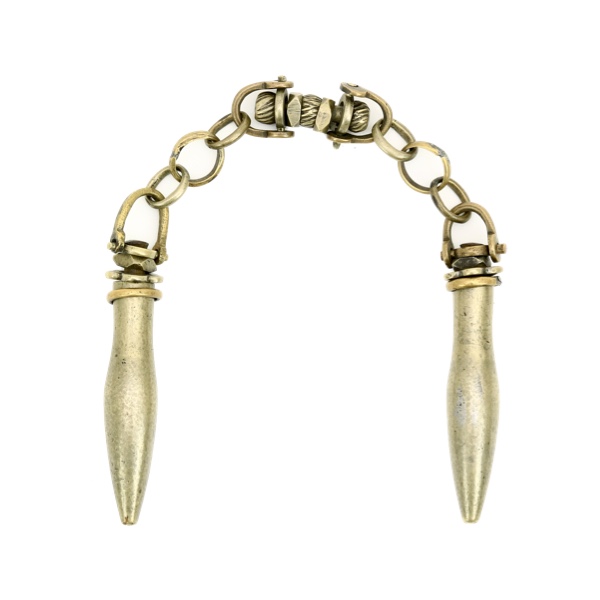
Chinese báitóng whip
A Chinese traditional hidden striking weapon, this time executed in the "white copper" alloy.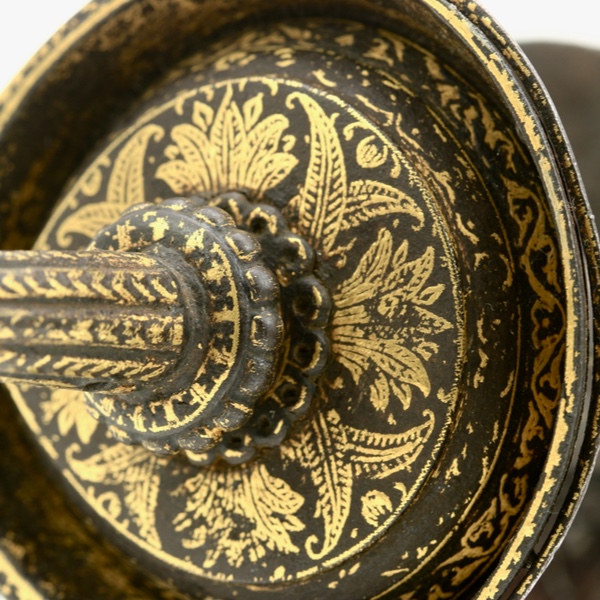
Damascening
Inlaying or overlaying of gold or silver on another metal.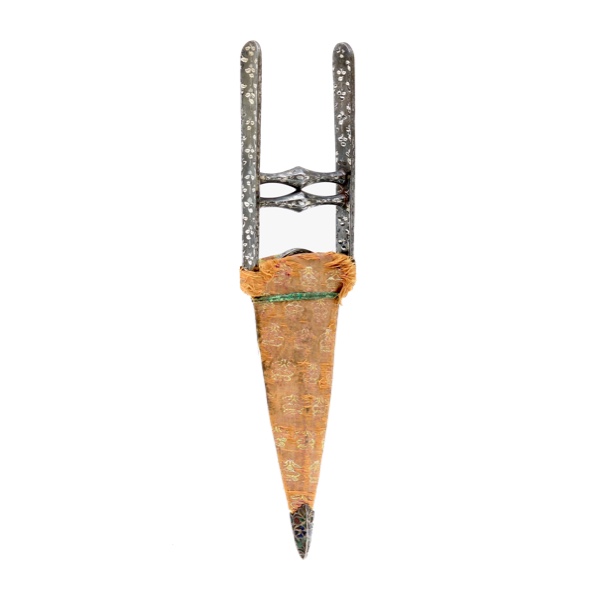
A katar with true inlay decoration
Late 17th century. With wootz blade and enamel chape.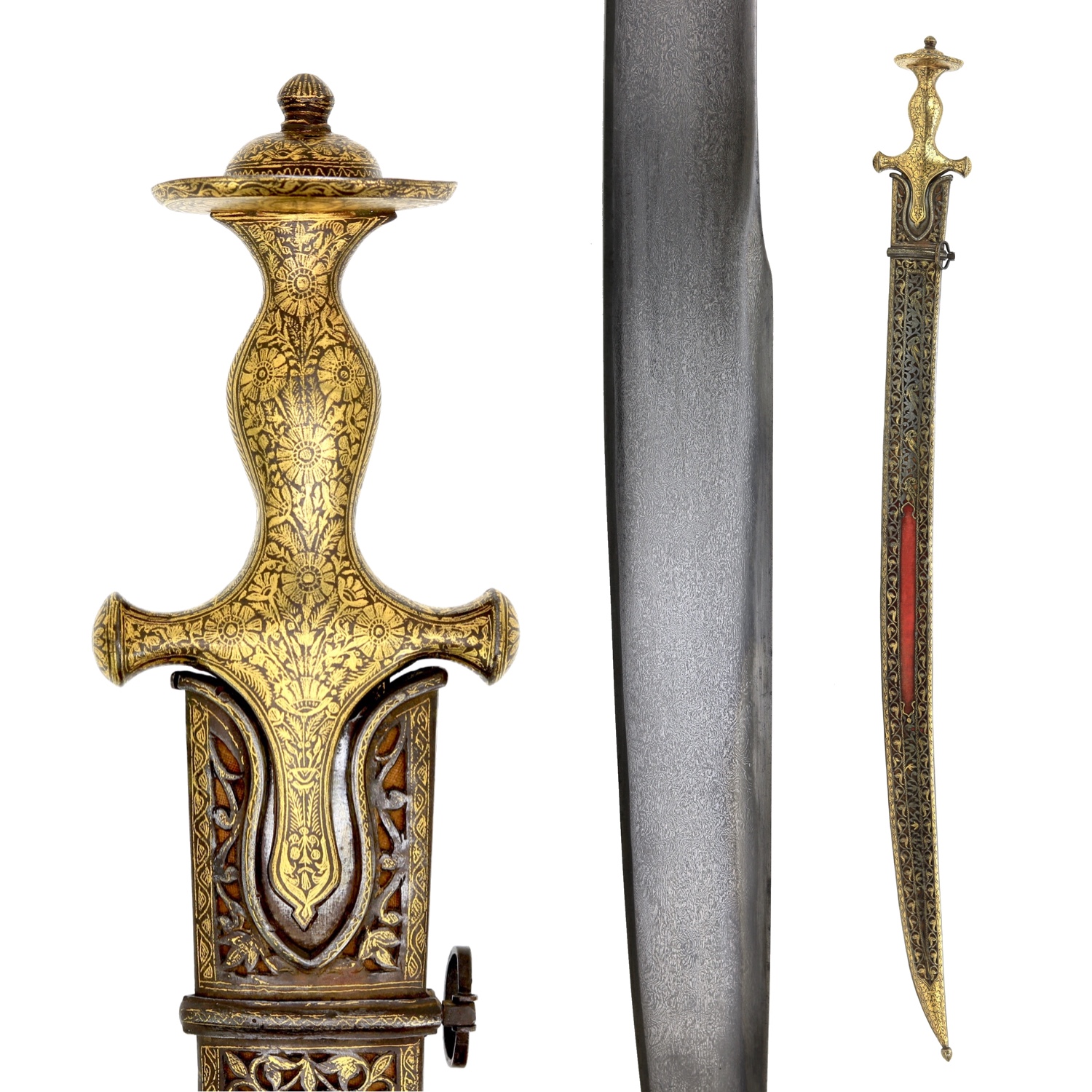
Wootz talwar with pierced scabbard
With fine gold overlaid hilt, tight-grained wootz blade and elaborately pierced scabbard.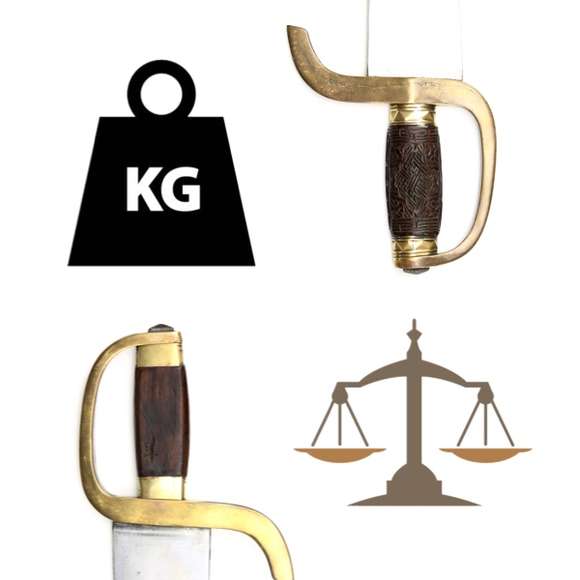
On weight and balance
In researching antique arms -or any kind of material culture for that matter- it is of paramount importance to actually feel and handle pieces.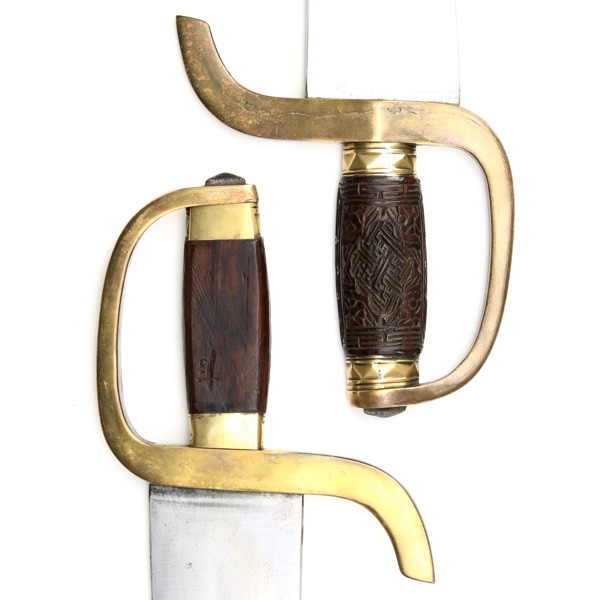
Very good hudiedao set
With fine carved hilts, substantial bronze D-guards, and subtle signs of heat treatment on the blades.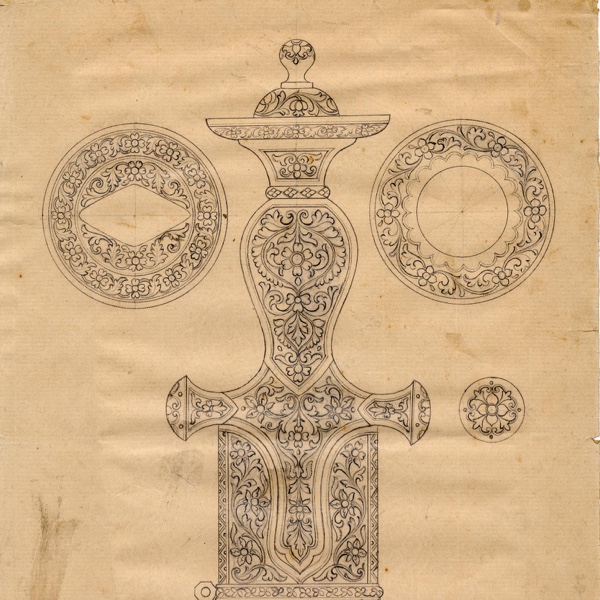
Oomersee Mawjee
Famous maker of metalwork from Bhuj, Kutch.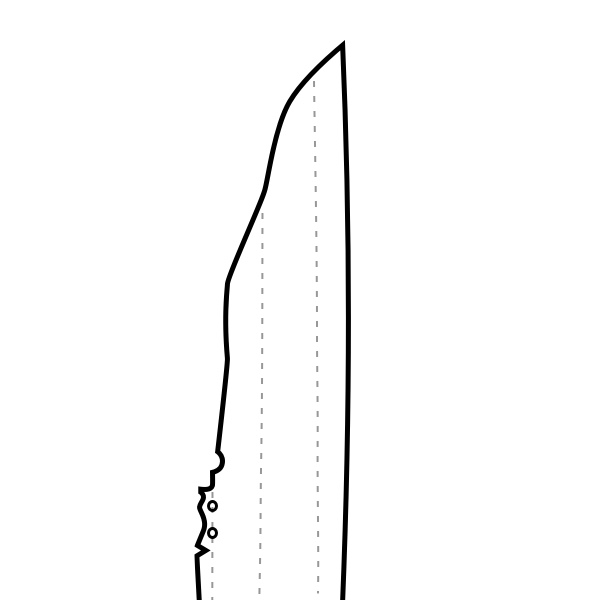
Li-po-tong
Long Way Dayak word for a type of mandau tip.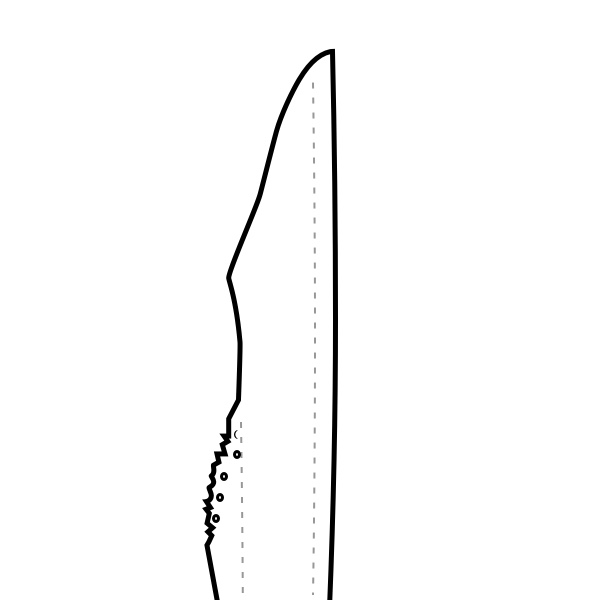
Lidjib
Long Way Dayak word for a type of mandau tip.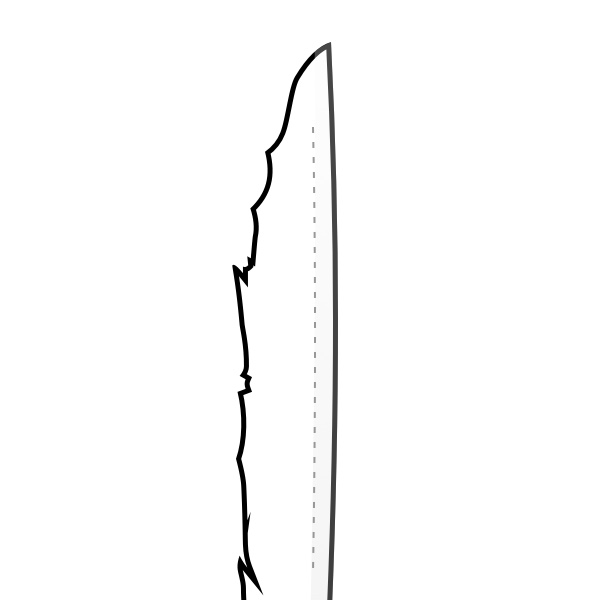
Longna
Long Way Dayak word for a type of mandau tip.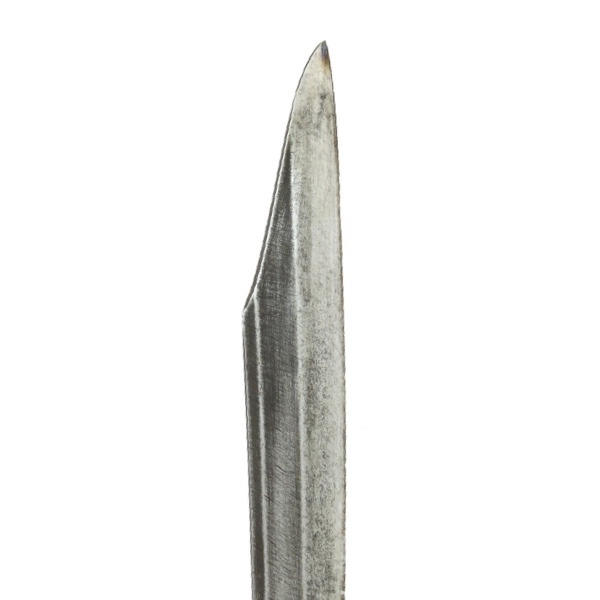
Monong
Long Way Dayak name for a type of mandau tip.